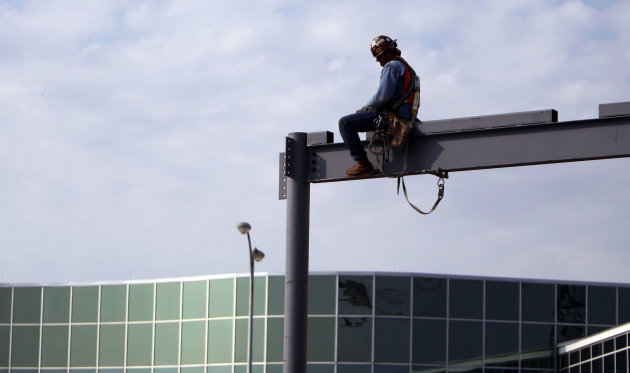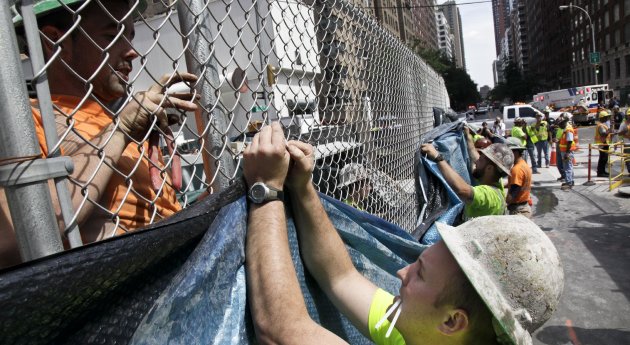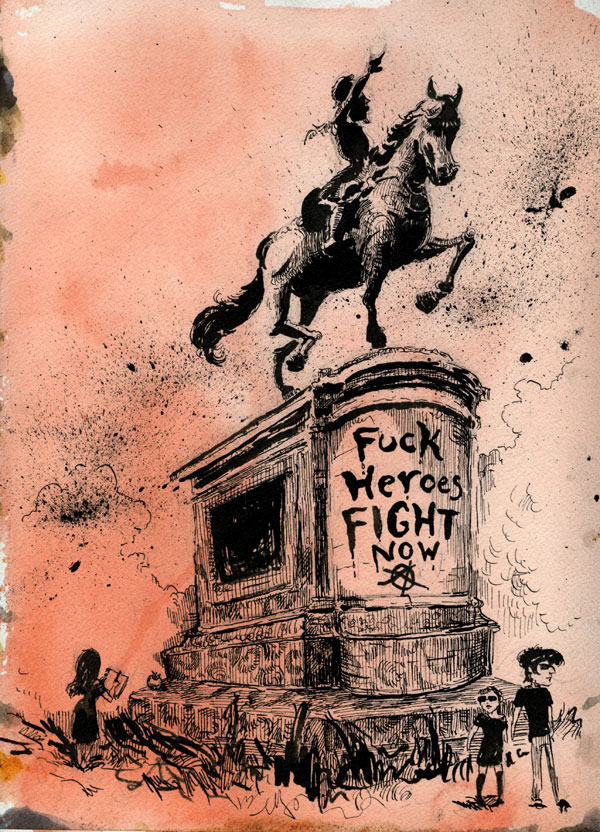By Laurie Penny and Molly Crabapple
 The
Golden Dawn used to come out only at night. For a street-fighting
fascist gang turned ascendant political party, with all the weary
symbolism of flame-waving and puffed-up synchronized shouting,
individual members of Greece's ultra-right thug club were curiously
reticent to attack immigrants and people of color before
nightfall—until now. Now, they’re killing in daylight.
The
Golden Dawn used to come out only at night. For a street-fighting
fascist gang turned ascendant political party, with all the weary
symbolism of flame-waving and puffed-up synchronized shouting,
individual members of Greece's ultra-right thug club were curiously
reticent to attack immigrants and people of color before
nightfall—until now. Now, they’re killing in daylight.
They come out in clutches of three, four or more and attack in
the streets, usually under the cover of darkness. But lately they have
been growing bolder, emerging during the daytime, in full view of a
police force that nobody trusts to intervene. Many areas of Athens have
become, in the past year, suspended street-battles. People with darker
skin are afraid to go out alone.
“I came here from Bangladesh six and a half years ago, and in the
last two years a lot has changed,” says Arif, 28, a marketing student
living in central Athens. While racist violence was a sporadic problem,
“Now the Golden Dawn come out in large numbers and openly, they have
public meetings, speeches saying we don’t want immigrants in our
country, and they beat up people right in front of the police, who do
nothing,” he says. Arif is shy and slight, stacking chairs in the
restaurant where he works, but as he describes what it is like to be
Asian in Greece, he slams the chairs down hard and speaks louder.
“For sure, I’ve been afraid,” he says. “When I first came here, I
was going out almost every day and coming back at two or three in the
morning, but now those groups are bigger. They draw their marks around
Attica Square. They’re not afraid of anyone.”
Eighty per cent of Europe’s immigrants arrive in Greece, the port
of the Mediterranean, and due to a quirk of EU legislation all asylum
seekers and refugees have to stay in the country where they first
arrived. In the past year, the flow of migrants swelled as families and
individuals from the Middle East fled the tumult of the Arab Spring
uprisings in Tunisia, Libya, Egypt, Syria and Bahrain. They came from
Turkey, Africa and the Gulf, arriving in the port city of Patras.
Omonia is a poor area of central Athens where refugees and
migrants arriving from ports across the country concentrate. They are no
more able to find livable work than any native Greek. It’s where the
police raids have started, where the worst of the racist violence takes
place after dark. And yet, according to New Democracy officials, it is
the ordinary citizens of Omonia who are the real problem.
One soon suspects that New Democracy, Greece's main center-right
party, sees political advantage in fostering racial tension and allowing
violence towards migrants to continue. When you learn that
international human rights organisations condemned Greek police for
letting racist attacks go unpunished, even as 1,600 migrants were
deported in the first of many public raids, the suspicion becomes
nauseating reality. The new deportation policy is named for Zeus
Xenios—the Greek god of hospitality—because we have come to the end of
the age of irony. These days, state power is the bully in the corner,
daring you to laugh in its face.

At the rally in Nikaea, the police who line both sides of the
street in formation and in full battle armor look like an occupying
army. It is likely that at least some of them voted for the fascist
party that these protesters have come out together to decry. Exit polls
in the last elections suggested that 50% of police officials in urban
areas cast their votes for the Golden Dawn, a party whose mimicry of the
postures of democracy is not yet efficient enough to prevent its
representatives
physically assaulting socialists on live national television.
Thanks in part to its defenders in the police force, the Golden
Dawn won 18 seats at the last elections with an agenda openly hostile to
migrants and people of color. It pursues the standard route for
far-right extremist groups seeking to exploit economic hardship in
Europe: appeals to nostalgia and patriotism combined with a
scantily-clad agenda of violence.
"I know many [who have been attacked by Golden Dawn members]"
says Malick Abdul, a middle-aged Pakistani community leader in Nikaea.
"Only a month ago there was a case where seventeen people were beaten in
a bus station. The bus driver and steward, after dragging them off the
bus, called Golden Dawn and they all attacked the group of Pakistanis.
This happened in Pyrgos. I’ve been in Greece for 23 years now and it
wasn’t like this before. We were having a wonderful time here. But in
the last 4 years the atmosphere changed and things like that started
happening. I have a shop here. My children were born here."
Just days later, Human Rights Watch released a report, "
Hate on the Streets,"
(PDF) making official the naked desperation in the square at Nikaea:
Pakistanis, immigrants and non-native Greeks are afraid to go out alone
because of racist violence, and the police do nothing.
"The police don't come here anymore," Malick continues. "They
just stopped. Buses, as well. They attack us everyday, even today, just
before the demonstration. And the police blocked all the buses that were
coming to bring more people to the demo from around Athens. All the
streets were blocked, and the buses were turned around."
"I was attacked and stabbed here, about a year ago." says another man, interrupting him, "It was a group of seven. Golden Dawn."
Two hours before dusk, the speeches end and the march sets off.
The streets are narrow, the tarmac coated in hot dust. The
demonstrators, chanting in unison, pour down a throughway. It's the same
chant, over and over—
pote ksana fasismos!—fascism, never again. Not just never, but never
again.
In continental Europe, in a suburb where the grandmothers leaning over
balconies to watch the drama have clear and potent memories of the
1967–1974 military junta, the distinction is important.
"The nazis came here to shut down the shops of the Pakistani
immigrants," says Petros Constantinou, "and this is a united action
against them.” Like many people at this march, he uses the term ‘Nazi’
freely to describe the Golden Dawn. The Golden Dawn say that they are
not Nazis. It is, in fact, the main thing that they say in public.
Nonetheless, the hairs on the back of your neck rise the first time you
see the Golden Dawn’s insignia. It looks like an unravelled swastika.

A boy, no older than eight runs ahead of the demonstration. Darting
in and out of the crowd, he sits on low steps while the adults,
straining behind an enormous anti-fascist banner, catch up. His skin is
dark and freckled, his eyes are blue, and his baseball cap is pulled
down tight over his head. I give him the thumbs up, and he sticks out
his tongue. I stick mine out further. He pulls a face. He laughs and
runs away, and then runs back. Somewhere in the crowd a few of his
relatives chant—
Fascism, Never Again.



 The
Topsfield Fair, near Boston, Massachusetts, has an annual giant pumpkin
weigh-off and has for years offered a $10,000 bonus for the first
one-ton pumpkin. Ron Wallace of Greene, Rhode Island, has delivered that
pumpkin. His entry weighed 2,009 pounds!
The
Topsfield Fair, near Boston, Massachusetts, has an annual giant pumpkin
weigh-off and has for years offered a $10,000 bonus for the first
one-ton pumpkin. Ron Wallace of Greene, Rhode Island, has delivered that
pumpkin. His entry weighed 2,009 pounds!



















 Former
Idaho beauty queen Jamie Hilton suffered brain swelling after a
devastating fall in June. Doctors removed a large chunk of her skull to
allow the swelling to heal, then replaced it a few weeks later. In the
meantime, where did they store the skull? In her abdomen.
Former
Idaho beauty queen Jamie Hilton suffered brain swelling after a
devastating fall in June. Doctors removed a large chunk of her skull to
allow the swelling to heal, then replaced it a few weeks later. In the
meantime, where did they store the skull? In her abdomen. “I thought of this exact strategy many years before and really was
looking for the right patient to try it on,” said renowned plastic and
reconstructive surgeon Dr. Patrick Byrne.
“I thought of this exact strategy many years before and really was
looking for the right patient to try it on,” said renowned plastic and
reconstructive surgeon Dr. Patrick Byrne.





















 Lunar phobic bats dodge moonlight
Lunar phobic bats dodge moonlight